Alaskan husky: breed features and breeding

The Alaskan Husky is a unique breed of dog. Its representatives are considered the most hardy and fastest. They are used to participate in sports sledding competitions and are jokingly compared to Formula 1 racing cars, because no one can compare with these dogs. This article is about what these animals look like, how to care for them and how to distinguish them from Siberian huskies.
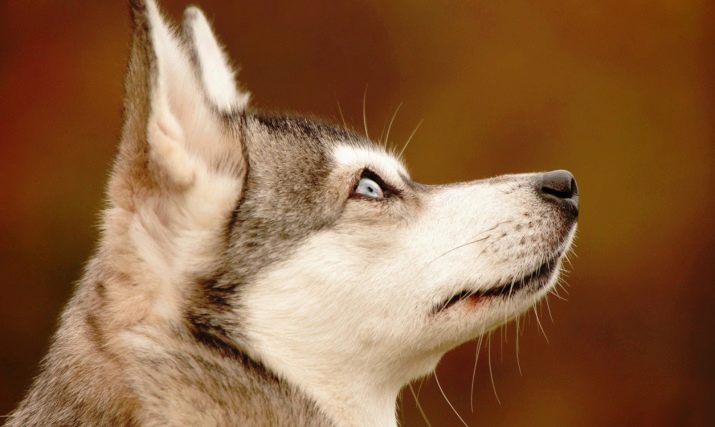
Origin story
The Alaskan Husky is not a breed in the usual sense, but a type of sporting dog. They appeared by genetic crossing of several breeds - the Siberian Husky, Shepherd Dog, Laika, Irish Setter. Some believe that there is also an admixture of the blood of real wolves. From each species, the animals took only the best - speed, dexterity, strength, intelligence, friendly character.
This species was named due to its origin. They took him out in Alaska... It all started with the fact that a fur trader brought light dogs from Siberia. He was captivated by the combination of compact size with great strength.The animals could carry the sleigh rather quickly and almost never get tired. They were Siberian huskies.
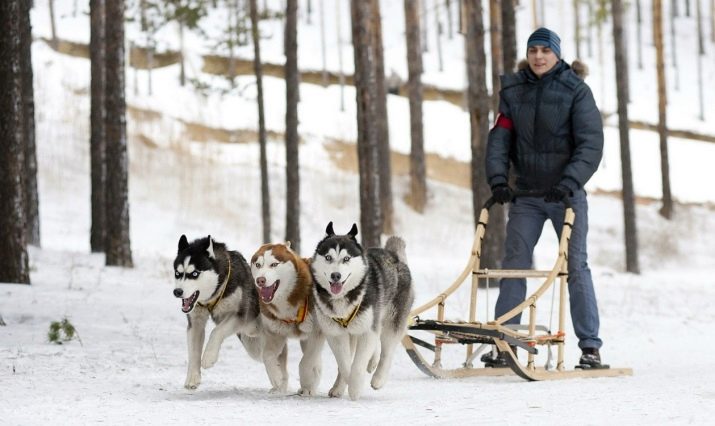
The specialists were also impressed by the qualities of the fluffy beauties, but decided that they could be improved. In order to increase the strength indicators of dogs in Alaska, they began to conduct genetic experiments. The appearance of the new species did not really matter, the foreground was maximum endurance and quick adaptation to conditions. The experiments were crowned with success.
However, the American Kennel Club did not recognize sporting animals as a separate breed. Today it is just a mestizo group. Animals are active, impetuous, capable of developing high speeds even in the snow. They are used both for transportation in the northern regions and for participation in competitions.

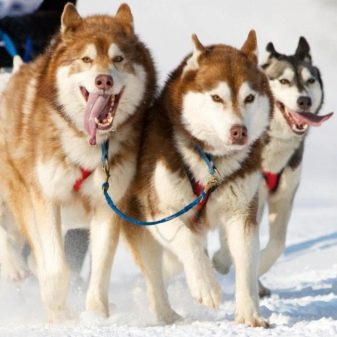
Description of the breed
Since this species contains genes from different breeds, there are no clear standards for appearance.

Alaskans from different nurseries can vary greatly, as the blood ratio of northern and other breeds varies. Nevertheless, some general characteristics can still be highlighted.
- The animals are well built... Males usually weigh 20-30 kg. Females are smaller in size. Their average weight is from 18 to 25 kg. In terms of height, the largest males can reach 65 cm. Unlike females, they have a more powerful skeleton. The girls are less stocky, but they cannot be called weak. Animals are distinguished by well-developed muscles. They are graceful, stately.
- The limbs are straight, of medium length, parallel. Paws are round, with strong nails.
- The color is variable. There are both variegated and monochromatic dogs. The coat can be white, red, gray, black (or several at the same time). The length of the coat is usually short. The fur is hard, dense, with undercoat.
- The ears of American individuals are usually erect., but in Europe, fold-eared dogs of this species are often found. The tail is long, it can be either fluffy (like a fox) or covered with short hair. Sometimes it hangs freely, but if the animal is alert, it rises.
- The look of the Alaskans is clear, beautiful. The eyes are usually brown or hazel in color, although blue-eyed individuals can also be found.
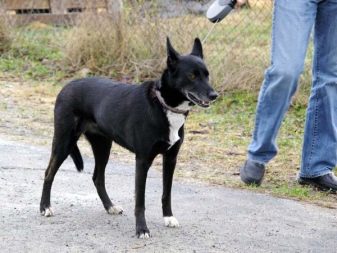
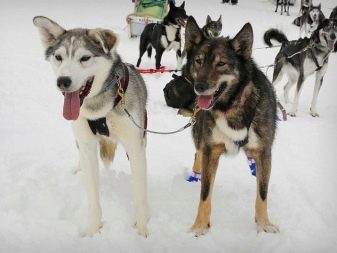
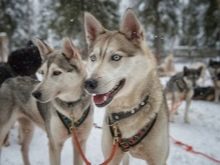
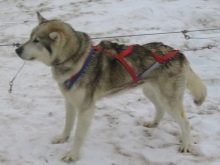
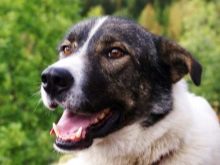
As is clear from the description, compared to purebred Siberian huskies, which have a standard appearance, these animals may look different. They are larger, stronger, more adapted to work.
However, both of them have common character traits - they are smart, devoted and become good friends for a person.
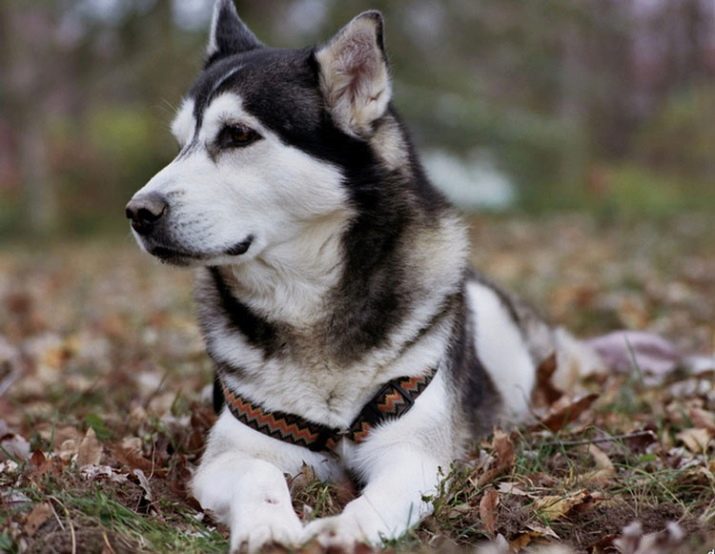
Character and behavior
Alaskans are very sociable and energetic animals. They love active games and attention. Dogs are very emotional, do not tolerate loneliness. Pets quickly become attached to the owner, it is hard to experience separation from him. Sometimes, in anguish, they even refuse to eat. If the owner leaves for a long time, the animal can run away to find him.
Dogs are completely non-aggressive, they love children.... They cannot be used as guards, because they rarely bark and are friendly, although they are wary of strangers. With other animals, representatives of this species easily find a common language. They are friendly, although they can show their leadership qualities. This is especially true for males.

It is also worth noting the independence and willfulness of the Alaskans. This must be taken into account when educating. It is important to instill obedience in the pet from an early age, to make it clear that the main one is not he, but the owner. In this case, in no case should you be rude. Animals do not tolerate screams, aggressive intonations, and even more so the use of force. In such situations, they experience a lot of stress and are very offended.
It is important to remember that mestizos are smart and quick-witted. It is worth making it clear to the pet that you love him, you see him as a friend and partner. In this case, the animal will respond to you with tenderness, devotion and willingness to help you in any business.These huskies are considered to be sporting or working dogs. Usually they are started as sled dogs, but this species successfully participates in endurance races. Animals work great in harness, in the north they help to transport not too heavy loads.
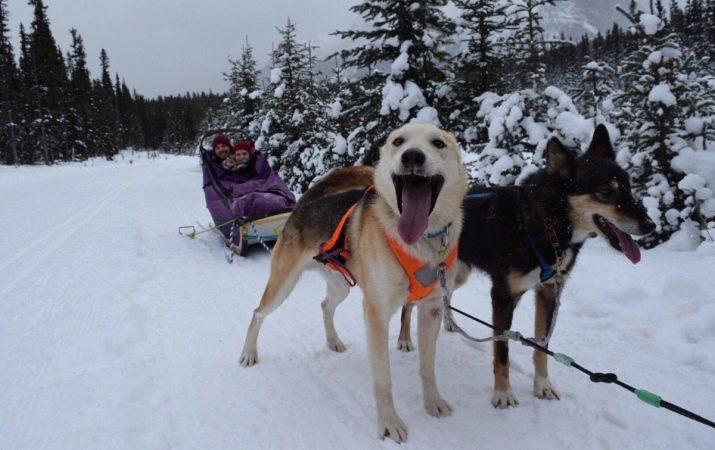
Feeding and care
Conditions of detention
Alaskan huskies need space. Their activity requires a lot of space for fun games. If you are looking for a pet, opt for a different breed of dog. In a city apartment, such an animal will be too cramped. An exception can be made only if the room is large, and you have the opportunity to take your pet for long walks twice a day. Remember that the husky needs quite a lot of physical activity (running, educational games). And also keep in mind that representatives of this species bark very loudly, and sometimes howl, which can cause the indignation of neighbors.
Keeping a pet in an open-air cage on the street is ideal. Do not be afraid that the dog will freeze. Alaskans are initially frost-hardy, they feel great outdoors in winter.
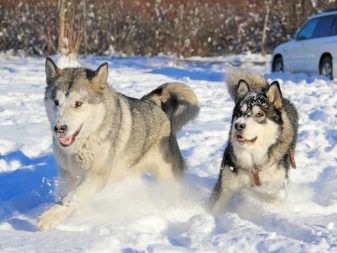
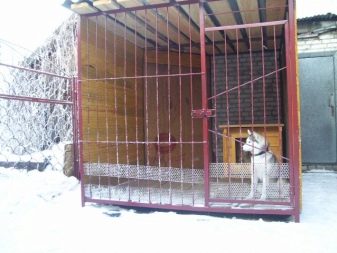
But in a warm apartment, the animal will have a hard time because of the thick "fur coat", so in this case it is important to organize for him a cool place away from the sun (especially in summer), install an air conditioner.
The aviary should be large, and it is advisable to bury the fences in the ground. This is because animals can dig tunnels underground if they want to escape. A high fence around the site will also be useful. To keep your pet from getting bored, you can have two individuals. This solution will help if the owner cannot devote enough time to interact with the dog.
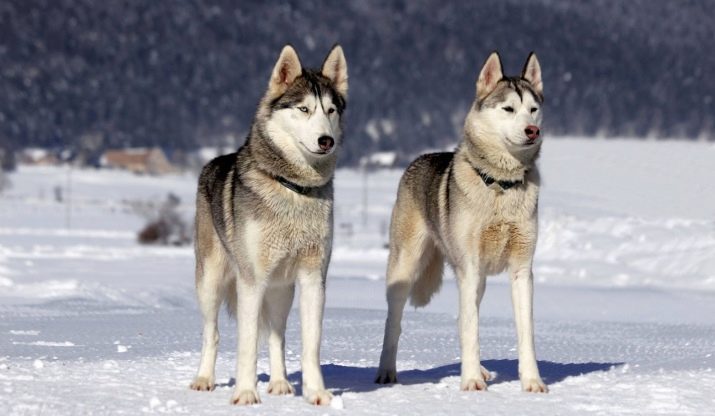
Care
Husky "fur coat" does not need special care. You only need to comb the coat once a week. The exception is the moulting season, which occurs twice a year. During these periods, the dog should be brushed every day. To do this, use a special metal brush.
Several times a month (as it gets dirty), you need to carry out water procedures. For bathing, use a dog shampoo. In summer, you can periodically wipe the animal's fur with a damp cloth to remove dust. Pay attention to your pet's eyes and ears. Ear cleaning should be done monthly. To do this, you need a cotton swab dipped in veterinary lotion. The eyes are gently treated as needed. The method is similar.
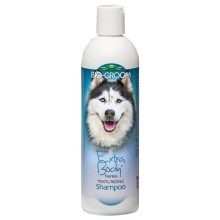
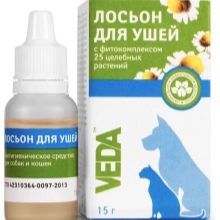
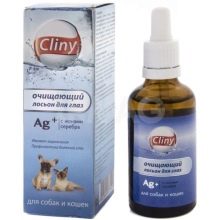
To prevent the dog from being bothered by dental problems, you need to give her solid food. It is also advisable to purchase dental sticks in a pet store - these are delicious bones that remove plaque. Many dogs grind their claws on their own. If this does not happen, they are trimmed as they grow back.... The pet should be taught to such a procedure from childhood. Of course, vaccinations are required. They are done on schedule.
Do not ignore preventive examinations by a veterinarian. If the dog is sick with something, it is better to identify the problem in a timely manner and take action.

Nutrition
Nutrition is important. Here it is worth considering the dog's lifestyle, namely, how many calories the animal spends during physical activity. For example, competitors burn 2000 kilocalories each while running 20 kilometers. If the dog is at home, even with active games and long walks, he is unlikely to spend even 1000 kilocalories per day.
To keep the muscles of the animal in good shape, it is necessary to give him foods rich in protein... This increases the strength and stamina of the pet. How strange in this case, experts recommend feeding the dog with pork. High fat content is only good for him.
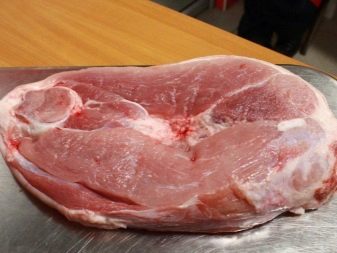

The rest of the diet of Alaskans does not differ from the menu of other dogs.
Vegetables and stews are useful. Of course, such a dog will not refuse a tasty bone. Prepared feed is also acceptable. The latter option is even considered the best, because it is very difficult to correctly calculate the daily ration of an animal using natural food. If the owner decides to feed the pet with commercial food, it is worth choosing premium and super-premium products. The feed should be high-calorie, fortified. Options are perfect, created specifically for huskies (this is indicated on the package).



It is strictly forbidden to feed the dog with flour and sweets. It is not advisable to give her leftovers from the host's table. Not all products can be good for an animal. Do not spoil your pet with chunks between meals. You must adhere to the regime.
Food intake should be carried out 2 times a day. Babies under 6 months are fed 4–5 times a day. For older puppies, bowls are filled 3 times a day. When the dog reaches the age of one year, he is transferred to two meals a day. An animal should always have access to fresh and clean water, regardless of age. Don't put tap water into the bowl. It is better to use drinking bottled liquid or water from a source (if available in the immediate vicinity).
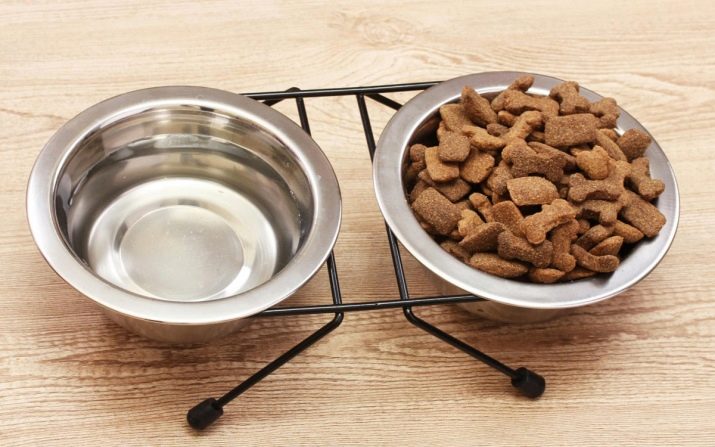
Health and longevity
Alaskan huskies are distinguished by strong immunity. They rarely get sick. If you feed the dog well and follow all the rules of care, the risk of any disease is minimized. Only in elderly individuals can there be problems with the musculoskeletal system and decreased vision. The rest of the animals remain healthy. As for life expectancy, representatives of this species usually live up to 12 years. Centenarians reach the age of 15 years.

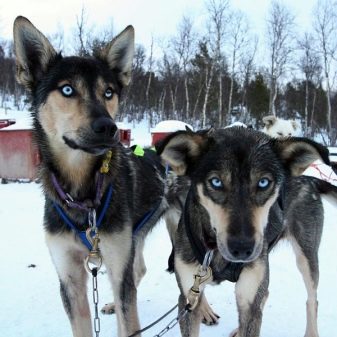
Education and training
Alaskans are smart, easy to learn. However, they always have their own opinion. The dog will execute the command only if he himself sees the meaning in it. Training such a pet will require a lot of patience and understanding from the owner. He should be persistent and domineering, but not too tough. Husky must see his owner as a friend and leader, then he will obey.
First you need to train your dog to walk with a collar on a leash. In order to socialize, you should more often take your pet to busy places, show him other animals and people, if possible, provide an opportunity to communicate with them. Training should begin after the dog reaches three months of age.
Naturally, you need to start with the simplest commands, then you can gradually increase the complexity of the tasks.
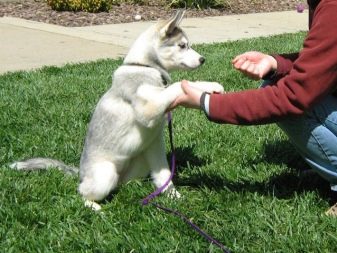
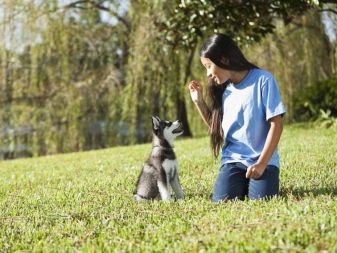
In addition, it is worth knowing a few specific rules regarding the training of such dogs.
- You should not move on to learning the next command until the dog has mastered the current one perfectly. He must clearly understand what is required of him, immediately perform the necessary actions. If you try to teach two commands at the same time, the pet will get confused and will not understand either of them.
- Training is best done by one person, who will be considered the main owner of the animal. As much as everyone in the family would like to take part in the training, you should not do this. It is important for the dog to form an opinion about the leader who will have the highest authority, which will speed up the training.
- In the process of training, you can not scold the animal. Persistence and restraint in emotions should be shown, otherwise the dog may be offended.
- If the husky does not understand what they want from him, there is no need to get angry. It is better to give the dog a rest, to switch his attention to a fun game. After a while, you can continue learning.
- Even if the dog perfectly follows all the commands, you should not delay training. Alternate the educational process with play activities, otherwise the animal will become bored from performing monotonous tasks.
- You have to be fair. Of course, you cannot beat a pet and deprive him of food for a fault. However, with a stern look and appropriate intonation of the voice, one should make it clear that he is wrong.If the dog fulfills the commands perfectly and pleases with exemplary behavior, you need to praise and encourage him. This approach to upbringing will only increase the animal's respect for the owner.
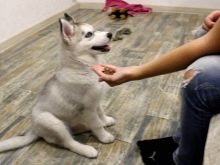
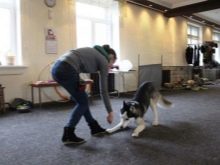

Be prepared for the fact that even a trained and disciplined pet can bully. Remember, despite its purpose, this is just an inquisitive and playful creature. Pay attention to the dog, show him your love, and she will return you in kind.
For the features of the Alaskan husky, see the next video.






































